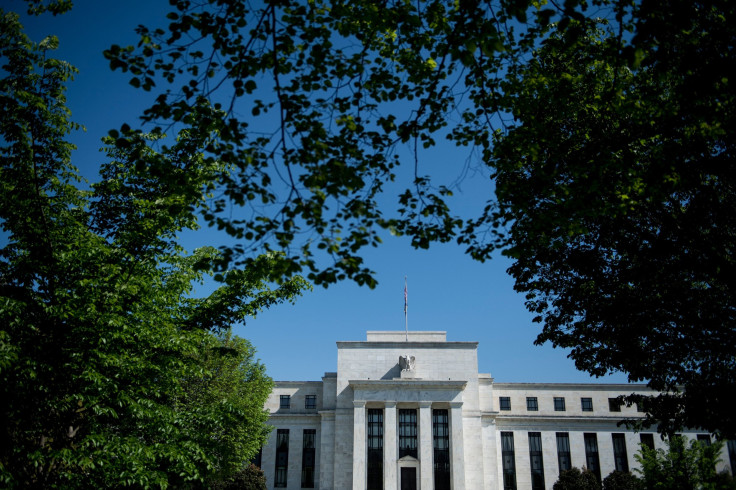The Federal Reserve Has Lost Its Way: Mike Cosgrove

Quantitative tightening (QT) has flattened the yield curve and Federal Reserve leaders cannot figure out why the 10-year minus 2-year Treasury yield curve is nearly flat. It’s as if Fed leaders don’t know they have a QT program that is sucking out $50 billion of liquidity per month and left alone will pull out $1.2 trillion of liquidity over the next eight quarters, counting the quarter we are in. Bond investors discount this massive QT program, and know that, if continued, it will induce a recession no later than 2020.
The personal consumption deflator has been under 2 percent on a December year-over-year basis since 2011. It has been seven years since the PCE closed at 2 percent or above. Two percent is the Fed’s inflation target.
Inflation expectations in 2019 are under 2 percent and the Fed is lost as to why. The Phillips curve is telling them that inflation should be higher and rising. Fed officials are convinced that full-employment is north of 4 percent and that unemployment at 3.9 percent, according to the Phillips curve, is inflationary.
That thinking may have been correct from 2009 to 2016 when the U.S. economy was in an income redistribution and regulatory mode. Since 2017 pro-growth policies of tax reform where incentives encourage faster economic growth so that millions of workers have jobs they wouldn’t otherwise have, plus a deregulatory agenda have likely pushed the full-employment rate down to 3.5 percent or less. The unemployment rate for people 25 years old and older is 3.1 percent. There is no reason why that can’t move lower.
The recent Job openings and Labor turnover reports had 6.8 million job openings in the U.S. According to another recent BLS report, there are over 4 million people working part-time who want to work full-time. The Federal Reserve needs to allow people to obtain a full-time job and people need to enter the labor force as there are another 2.5 million people in the 25-54 age group available to enter the labor force.
The Federal Reserve agenda seems to ignore that they have undershot their inflation target since 2011 and are in a 2019 disinflationary situation, according to inflation expectations and the yield curve. The Phillips curve needs to be tossed out and the Fed needs to incorporate market signals.
The Federal Reserve chairman Jerome Powell could talk about market signals such as the yield curve and inflation expectations and follow those signals. Powell knows this but probably figured, initially, he needed to pay attention to the Fed’s own economists and their models. That didn’t work, so now he can take more of a leadership role and guide Fed policy using market signals, along the line of what former Fed Chairman Alan Greenspan did.
Fed leadership needs to either halt quantitative tightening or reduce it by half until market signals such as the yield curve and inflation expectations say otherwise. The 10-year minus 2-year yield curve spread averaged over 100 basis points in the past 30 years. When the yield curve is nearly flat, like now, it is telling the Fed leadership that they are very close to inducing recession. There is no need for that with inflation already under 2 percent.
The Federal Reserve has a lot of experience in increasing interest rates and has a decent idea about the time lags involved with that policy. The technical process the Fed uses for increasing short-term interest rates does not depend on reducing the size of the Fed’s balance sheet. The Fed can rely on altering interest rates over the remainder of this business cycle to influence inflation expectations.
A rational Federal Reserve policy would have been to first normalize interest rates and allow the time lags to take effect. The second stage, that of quantitative tightening, should have come next if the economy and market signals supported it.
But the policy of both jacking up interest rates and pulling a massive amount of liquidity out at the same time is an absurd policy design. The European Central Bank (ECB), when they get around to raising interest rates, won’t make that same mistake. The ECB will first normalize interest rates and then shrink their balance sheet, if market signals allow.
It is very difficult to understand why Federal Reserve leaders would have increased interest rates four times in 2018 and, and at the same time, pulled a massive amount of liquidity out. Powell sounds more accommodative in his recent talking points but unless the Fed backs off QT, it looks like the U.S. is headed for a 2020 recession. Does Fed leadership want a 2020 recession?
Mike Cosgrove is principal at Econoclast, a Dallas-based capital markets firm, and a professor at the University of Dallas.
© Copyright IBTimes 2025. All rights reserved.




















